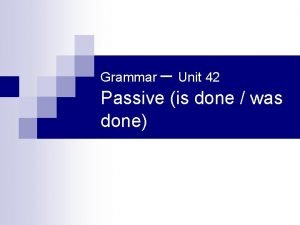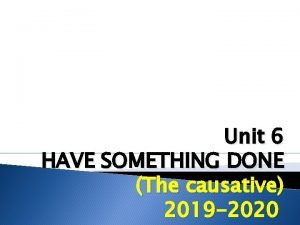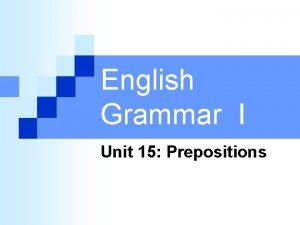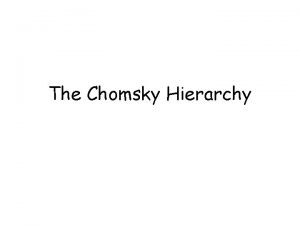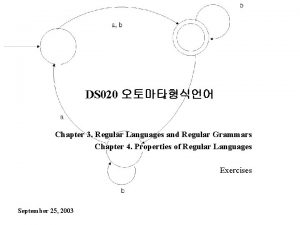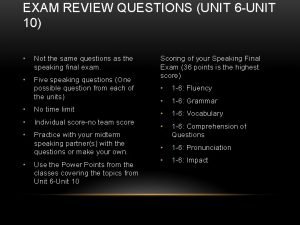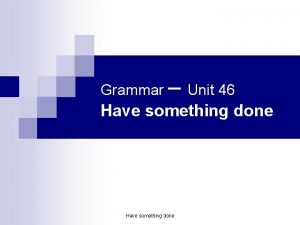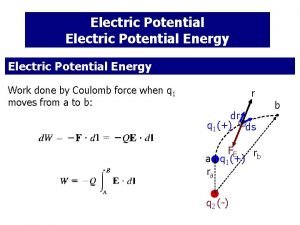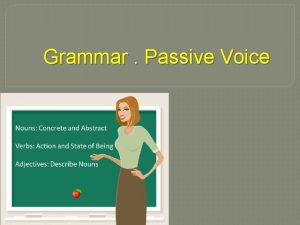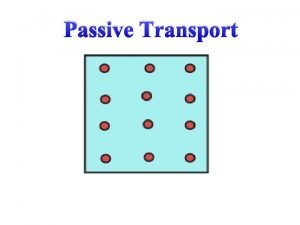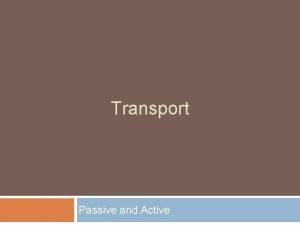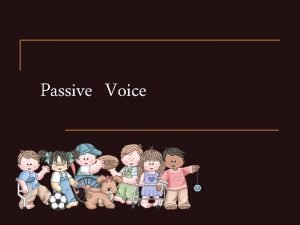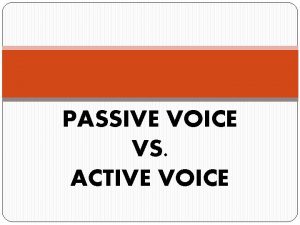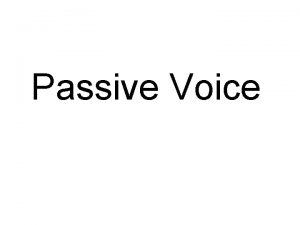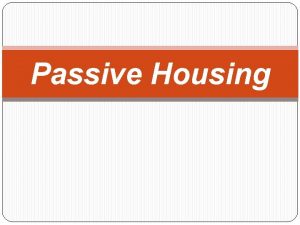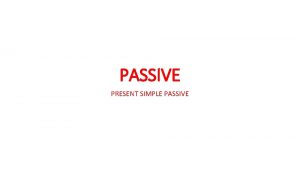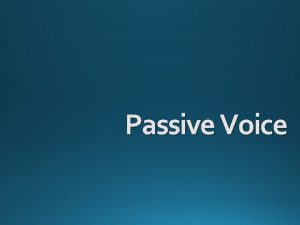Grammar Unit 42 Passive is done was done













![Continue. . n Past simple ¨ active: [somebody cleaned this room yesterday] cleaned/saw etc. Continue. . n Past simple ¨ active: [somebody cleaned this room yesterday] cleaned/saw etc.](https://slidetodoc.com/presentation_image/615126679dc4bd36d1fc7dc259fdeb5d/image-14.jpg)


- Slides: 16

Grammar – Unit 42 Passive (is done / was done)

Agenda n Learning Objectives n Example Set A to learn the difference between active and passive voices n Example Set B to learn the importance of subject in the active and passive voices n Example Set C to learn about active and passive voices in Present Simple and Past Simple.

Agenda Ø Learning Objectives n Example Set A to learn the difference between active and passive voices n Example Set B to learn the importance of subject in the active and passive voices n Example Set C to learn about active and passive voices in Present Simple and Past Simple.

Learning Objectives n Learn the differences between active and passive voices n To learn the importance of subject in active and passive voices n To learn and understand the usage of active and passive voices in present simple and past simple

Agenda ü Learning Objectives Ø Example Set A to learn the difference between active and passive voices n Example Set B to learn the importance of subject in the active and passive voices n Example Set C to learn about active and passive voices in Present Simple and Past Simple.

Example Set A n This house was built in 1935. Was built is passive. n Compare active and passive: n Somebody built ( this house ) in 1935. (active) n object ( This house) was built in 1935. (passive) Subject

Continue When we use an active verb, we say what the subject does: q My grandfather was a builder. He built this house in 1935. q It’s a big company. It employs two hundred people. When we use a passive verb, we say what happens to the subject: q This house is quite old. It was built in 1935. q Two hundred people are employed by the company.

Agenda ü Learning Objectives ü Example Set A to learn the difference between active and passive voices Ø Example Set B to learn the importance of subject in the active and passive voices n Example Set C to learn about active and passive voices in Present Simple and Past Simple.

Example Set B n When we use the passive, who or what causes the action is often unknown or unimportant: n A lot of money was stolen in the robbery. (somebody stole it, but we don’t know who) n Is this room cleaned every day? (does somebody clean it? – it’s not important who)

Continue If we want to say who does or what causes the action, we use by…: q This house was built by my grandfather. q Two hundred people are employed by the company.

Agenda ü Learning Objectives ü Example Set A to learn the difference between active and passive voices ü Example Set B to learn the importance of subject in the active and passive voices Ø Example Set C to learn about active and passive voices in Present Simple and Past Simple.

Example Set C n The passive is be (is/was etc. ) + past participle (done/cleaned/seen etc): (be) done (be) cleaned (be) damaged (be) seen etc. n Study the active and passive forms of the present simple and past simple: ¨ Present simple active: [somebody cleans this room every day. ] clean(s) / see(s) etc. passive: [This room is cleaned every day. ] am/is/are + cleaned/seen etc.

Continue. . n Many accidents are caused by careless driving. n I’m not often invited to parties. n How is this word pronounced?
![Continue n Past simple active somebody cleaned this room yesterday cleanedsaw etc Continue. . n Past simple ¨ active: [somebody cleaned this room yesterday] cleaned/saw etc.](https://slidetodoc.com/presentation_image/615126679dc4bd36d1fc7dc259fdeb5d/image-14.jpg)
Continue. . n Past simple ¨ active: [somebody cleaned this room yesterday] cleaned/saw etc. ¨ passive: [This room was cleaned yesterday. ] was/were + cleaned/seen etc.

Continue q We were woken up by a loud noise during the right. q Did you go to the party? ’ ‘No, I wasn’t invited. ’ q How much money was stolen in the robbery?

Summary ü Learning Objectives ü Example Set A to learn the difference between active and passive voices ü Example Set B to learn the importance of subject in the active and passive voices ü Example Set C to learn about active and passive voices in Present Simple and Past Simple.
 Unit 42 passive 1 (is done / was done)
Unit 42 passive 1 (is done / was done) The passive have something done unit 6
The passive have something done unit 6 15 prepositions
15 prepositions Cutter mill principle
Cutter mill principle Yiğit olan döne döne dövüşür sözleri
Yiğit olan döne döne dövüşür sözleri Left linear grammar example
Left linear grammar example Traditional grammar vs modern linguistics
Traditional grammar vs modern linguistics Chomsky hierarchy of grammars
Chomsky hierarchy of grammars Right linear grammar
Right linear grammar Ms sullivan teaches us grammar change into passive voice
Ms sullivan teaches us grammar change into passive voice 8b grammar the passive
8b grammar the passive Passive voice grammar
Passive voice grammar Voices in grammar
Voices in grammar Unit 10, unit 10 review tests, unit 10 general test
Unit 10, unit 10 review tests, unit 10 general test Unit 46 have something done
Unit 46 have something done Touch in past
Touch in past Force is the integral of potential energy
Force is the integral of potential energy
